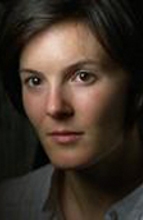Gerard Ryle and Kate Willson of the International Consortium of Investigative Journalists Win August Sidney
A 13-journalist team led by International Consortium of Investigative Journalists Director Gerard Ryle and ICIJ reporter Kate Willson won the August Sidney Award for “Skin and Bone,” a sweeping investigation of the largely unregulated global trade in human tissues.
The ICIJ investigation, which spanned 11 countries, was inspired in part by the case of a prominent ex-dental surgeon who was found to have illegally recycled tissue from over a thousand bodies from funeral homes in New York and Pennsylvania. The story was reported by the New York Daily News in 2005.
Unlike organs and blood, the trade in bone, skin, and other tissues is not carefully monitored by independent agencies. The temptation to cut corners is high, given that a single healthy body can yield up to $200,000 worth of recyclable tissues.
Doctors use human tissue for procedures ranging from spinal reconstruction to plastic surgery, often without telling their patients. Also, when doctors order tissue, they usually do so from a catalog that lacks any information on the tissue’s provenance, or under what circumstances it was collected.
Tissues from a single body are often divvied up amongst multiple patients on different continents. But there is no system in place to notify the recipients if the donor body turns out to have had an infection. Unscrupulous body brokers have even falsified records to hide deadly infections and violent deaths, ICIJ found.
Contaminated tissue has been linked to at least 1,352 infections and 40 deaths in the U.S. since 2002, according to ICIJ’s analysis of FDA records.
“Recycled human tissue has the power to heal, but the unregulated market for tissue also has great potential to harm. The ICIJ investigation explores this multifaceted issue with great rigor and great compassion,” said Sidney judge Lindsay Beyerstein.
The ICIJ, a project of the Center for Public Integrity, is a global network of 160 journalists in over 60 countries who work together on investigative stories.
The ICIJ team for “Skin and Bones” consisted of Gerard Ryle, Kate Willson, Vlad Lavrov, Martina Keller, Thomas Maier, Michael Hudson, Mar Cabra, Kimberley Porteous, David Donald, Alexenia Dimitrova, and Nari Kim. NPR reporters Joseph Shapiro and Sandra Bartlett also contributed.
Kate Willson joined the International Consortium of Investigative Journalists in 2007. She earned her master’s in journalism at American University and her bachelor’s in French at Oregon State University. Focused on enterprise and investigative reporting, she has worked from Colombia, Brazil, Mexico and for community and daily newspapers in Oregon and New Mexico.
Gerard Ryle leads the ICIJ’s headquarters staff in Washington, D.C., as well as overseeing the consortium’s more than 160 member journalists in more than 60 countries. Before joining as the ICIJ’s first non-American director in September 2011, Ryle spent 26 years working as a reporter, investigative reporter and editor in Australia and Ireland, including two decades at The Sydney Morning Herald and The Age newspapers.
The Sidney Hillman Foundation honors excellence in journalism in service of the common good. Judges are Rose Arce, Hendrik Hertzberg, Katrina vanden Heuvel, Harold Meyerson, Susan Meiselas and Lindsay Beyerstein.
The Sidney Award is given once a month to an outstanding piece of socially conscious journalism, by the Sidney Hillman Foundation, which also awards the annual Hillman Prizes every spring. Winners of the Sidney receive a certificate designed by New Yorker cartoonist, Edward Sorel, a $500 honorarium and a bottle of union-made wine.
Backstory
- Describe how the idea for “Skin and Bone” took shape.
The industry behind the recycling of dead bodies has been linked to a number of scandals over the years, the most famous being in 2005 when more than 1,000 bodies were “stolen” from funeral homes in New York and Pennsylvania. But nobody had ever looked at the industry on a global scale. We felt it was the kind of cross-border work that the ICIJ - with 160 members in more than 60 countries - was well placed to do.
- Organs and blood are tightly regulated, why is the tissue trade such a free-for-all?
Modern blood and organ collection is bar-coded and strongly regulated - reforms prompted by high-profile disasters that had been caused by the poor screening of donors. Products made from skin and other tissues, however, have few specific laws of their own. This is due to a number of factors, one of which is that the laws have not been able to keep up with advances in technology. Another is that it is expensive for governments to take measures that protect public safety. In the U.S., the Food and Drug Administration largely relies on standards that are set by an industry body, the American Association of Tissue Banks.
- Why are these lax regulations such a pressing public health issue?
The industry says the chance of contamination in patients is low. Most tissue products undergo radiation and sterilization, rendering them safer than, say, organs that are transplanted into another human. There is little data, though, to back up the industry’s claims. Unlike with other biologics regulated by the FDA, firms that make medical products out of human tissues are required to report only the most serious adverse events they discover. That means that if problems do arise, there’s no guarantee that authorities are told. And because doctors aren’t required to tell patients they’re getting tissue from a cadaver, many patients may not associate any later infection with the transplant.
- How widespread is the problem of non-consensual tissue harvesting?
It is extremely difficult to tell. The former dentist who “stole” the bodies from New York and Pennsylvania operated with impunity for years. He was only caught after one of the funeral homes where he obtained his material changed ownership. Shortly after he was caught, a second tissue recovery business that operated in several U.S. states was also convicted of falsifying death records. There have been repeated allegations in Ukraine that human tissue was removed from the dead without proper consent. Some of that tissue may have reached other countries, via Germany, and may now be implanted in hospital patients. One of our major findings is that inadequate safeguards are in place to ensure all tissue used by the industry is obtained legally and ethically.
- The U.S. is the largest tissue market in the world, but you found that regulators are only dimly aware of where most of it comes from, or where it ends up. How is this possible?
In contrast to tightly-monitored systems for tracking intact organs such as hearts and lungs, authorities in the U.S. and many other countries have no way to accurately trace where recycled skin and other tissues come from and where they go. The lack of proper tracking means that by the time problems are discovered some of the manufactured goods can’t be found. On this point, the industry says it is able to track the products from the donors to the doctors, using their own coding systems, and that many hospitals have systems in place to track the tissues after they’re implanted. But no centralized regional or global system assures products can be followed from donor to patient. The U.S. government simply hasn’t thought it a priority.
- Your reporting raises concerns about how some tissue collection firms are abusing the generosity of tissue donors. What are some of the problems you observed?
One of the strongest stories came from a California family who consented to allow tissue to be taken from a relative, on the understanding that his body would be reconstructed before burial. But the funeral director was so horrified by what he saw after the body was turned over to him that he wrote a scathing complaint to the tissue collection agency. The family is now suing the tissue collection agency, accusing it of fraud, mutilation of a corpse, and infliction of emotional distress.
- Was there anything you wanted to include in the story, but didn’t have room for?
It was not a question of not having room, but one of the most frustrating aspects of our research was the lack of comment from the FDA, which declined repeated requests for on-record interviews. The industry association also refused repeated requests over four months for on-record interviews.



